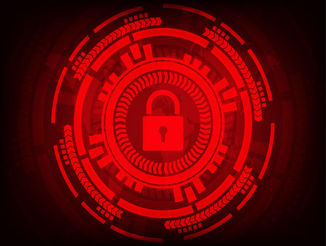It probably shouldn’t be too surprising to most people that hackers are the number one threat in the cryptocurrency world. Hacking was a problem even when Bitcoin wasn’t terribly valuable, with Mt. Gox having been a victim from 2011, when Bitcoin peaked at over $30, to 2014, when the hack was finally brought to light at a time when Bitcoin was worth over $500. Now that Bitcoin is worth many times that, the incentive for hackers is greatly increased.
There are three major ways that hackers can try to steal to gain Bitcoin and other cryptocurrencies. The first is to go after cryptocurrency exchanges themselves. Mt. Gox was sloppy and used a hot wallet, allowing hackers easy access. Exchanges nowadays understand the risks of hot wallets and store most of their assets in cold wallets that aren’t accessible via the internet. And while some exchanges still end up getting hacked, it’s mostly smaller exchanges. Larger operators such as Coinbase have so much riding on their reputation for safety that they have taken every precaution to prevent hackers from gaining access.
The second method, and one that is gaining popularity, is to hijack people’s computers to surreptitiously mine cryptocurrencies, known as cryptojacking. This can happen in a number of ways, through apps you download from an app store, programs you install on your computer, or plugins you install in a web browser. Embedded in the code of some of these apps are programs that will harness any unused computing power of your computer, tablet, or phone to mine cryptocurrencies for the app’s creator. That’s why you need to be very careful about what types of apps, programs, or plugins you install. Do your research and see if other users have complained about cryptojacking. And if you suddenly see your computer moving slowly because your CPUs and GPUs are under heavy load, you may very well be the victim of cryptojackers.
Finally, hackers will attempt to target wallet holders themselves. Whether that’s a brute force hack, a phishing attempt, or getting cryptocurrency owners to download compromised apps, attacking wallets takes the most effort because of the sheer number of wallets out there, but is perhaps the most successful hacking method because so many users fail to take proper safety precautions.
If you’re going to trade cryptocurrencies, make sure that you take every step you can to protect yourself. As with any sensitive financial information, never engage in cryptocurrency transactions over public Wi-Fi networks. Be wary of phishing emails and don’t click on links or enter passwords unless you’re absolutely sure you’re on the right website. Don’t install apps or plugins that deal with cryptocurrencies because they may be compromised. You might even want to have a computer dedicated solely to cryptocurrency transactions. And of course, be sure to use a cold wallet.
If all of that seems like a lot of hassle then you might want to think about other ways to invest in cryptocurrencies rather than just doing everything yourself. The prevalence of hackers and the steps that need to be taken against them are one reason Bitcoin IRAs have become so popular among cryptocurrency investors. Bitcoin IRA custodians maintain your Bitcoin assets in cold storage, with multiple levels of security, so that your Bitcoin is kept securely away from hackers. They do the hard work of keeping your investments safe so that you don’t have to.
This article was originally posted on Coin IRA.





